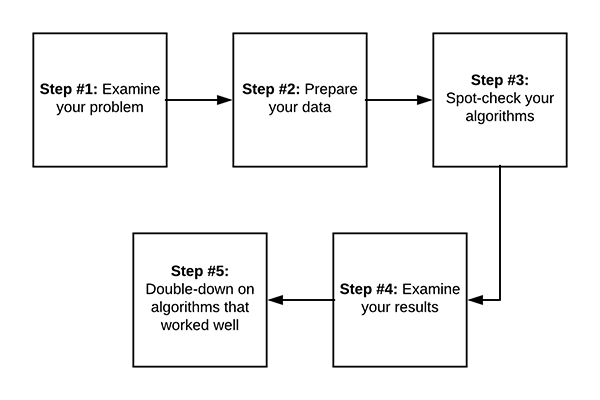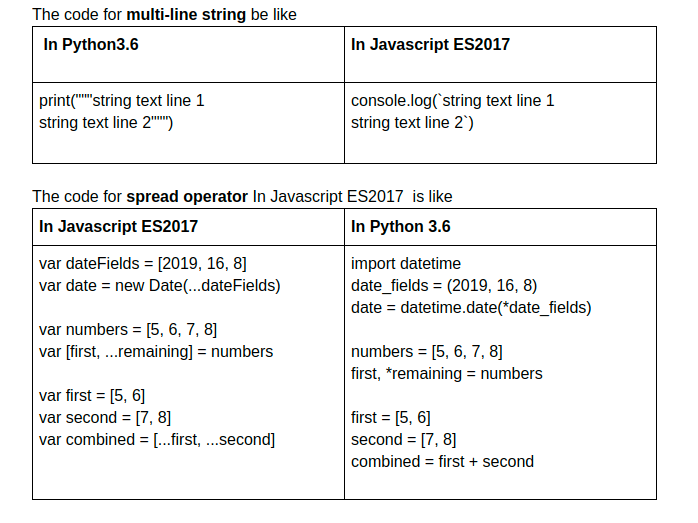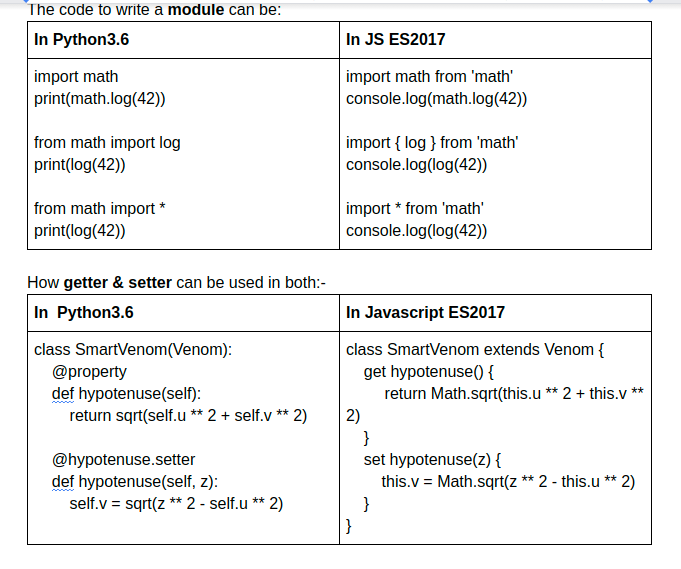
The web development arena is moving at a fast pace and has reached an advanced stage today. Python and Javascript making some significant contributions for almost three decades. Now, being a developer or a business if you are planning to pick one of these, then it’s going to be tough just because both are too good to avoid. Hence, this brings up the topic ‘Python vs JavaScript: Which One Can Benefit You The Most?’
These two languages are supported by various trending web frameworks and libraries which are the real game-changers. The introduction of these frameworks and libraries to the web ecosystem has brought new paradigms, traditional notions, and standards of software development.
If you are reading this post, I can assume you might be confused between different web frameworks and libraries of Python and JavaScript and there are some troubling questions coming to you, like:
- Which is the most suitable and reliable for my next web application?
- Which language offers more features for building ML applications?
- What are the major differences in both web programming languages?
- Which language leads in the future industry: Python or JavaScript?
- What are the differences in their coding styles?
That’s why I have curated a cumulative list of the differences between the two web programming languages based upon some parameters. This would not only help developers to choose the best language for them but also help businesses to go with the right technology in order to succeed in this tough competition.
Let’s dive into the comparison of “Python vs Javascript”
1) Introduction
Python is a popular high-level web programming language and in huge demand these days. It comes with dynamic semantics and uses OOPs concepts which makes it easy to learn and code. It creates amazing web applications by supporting different programming paradigms viz. procedural programming, functional programming, object-oriented programming, and imperative programming. It consists of a variety of built-in modules & packages.
There is a parameter called “Inheritance” which is defined in Python like below:
class Block:
def __init__(self,name):
self.name=name
def greet(self):
print (‘Hi, I am’ + self.name)The above coding instance shows you a class definition and __init__ function is a constructor. It uses a class-based inheritance model.
JavaScript is an object-oriented programming language that helps in creating dynamic web applications and this got standardized in ECMAScript language specification. It also supports various programming paradigms such as functional programming, object-oriented programming and imperative programming except procedural programming as in Python. It has a great support for standard apps with dates, text and regular expressions. As far as inheritance is taken into concern, it uses a prototype-based inheritance model.
Here is an example to show this:
Block = function(name){
this.name=name
this.greet =function(){
return “Hi, I am “ + this. name
}} Here I’ve created a function the same as a class in Python.
2. Embedding Machine Learning to Web Apps
Which one is the right choice Javascript or Python? Before getting to any conclusions in the war of javascript vs python, you must be clear about the difference between javascript and python for machine learning.
Due to the maturity of both the languages and positive feedback of early ML attempts in both has made these languages suitable for ML projects. Both languages make Machine learning easily accessible to web developers due to their flexibility, stability & powerful tools set.
Python programming language feeds most machine learning frameworks with NumPy, SciPy, Seaborn yet JavaScript has not lagged behind. It provides JavaScript frameworks viz. ML-JS, KerasJS, DeepLearn.js, ConvNetJS, Brain.js to help developers in implementing machine learning models.
By using machine learning, a computer can predict or take a decision on its own with some extent to great accuracy and this accuracy increases with the time. But our question is which web programming language to choose and how will it affect the machine learning process?
Here I have shown the machine learning process on Python:

The complete model is built on the selection of powerful algorithm and the machine learning type viz. reinforcement, supervised or unsupervised. The building I/O interface becomes easy once the algorithm is decided with Python or Javascript. In fact, the learning time depends on the algorithm and the CPU.
Here is an example:
Creating a simple API from a machine learning model in Python using Flask.
To serve your model with Flask, you need to do the following things:
First, load the already persisted model into memory when the app starts.
Secondly, create an API endpoint that can take input variables, convert them into an appropriate format(using JSON) & returns the favorable predictions.
So, let’s create a function predict() which can do the above things.
from flask import Flask, jsonify
app = Flask(__name__)
@app.route('/predict', methods=['POST'])
def predict():
json_ = request.json
query_df = pd.DataFrame(json_)
query = pd.get_dummies(query_df)
prediction = lr.predict(query)
return jsonify({'prediction': list(prediction)})
Now, you need to write the main class.
if __name__ == '__main__':
try:
port = int(sys.argv[1])
except:
port = 12345
print ('Model loaded')
model_columns = joblib.load(model_columns_file_name)
print ('Model columns loaded')
app.run(port=port, debug=True)Finally, your API is ready to be hosted.
After this, it automatically produces output on the given inputs. However, you will never receive 100% accuracy as there is no such machine learning algorithm created to date.
Hence, you can increase performance by working on algorithms and computing speed. So, which language to go with?
How Python is right for machine learning deployment?
Python has a great ecosystem of AI, data analysis, deep learning, and machine learning apps. Checkout what reasons make it the most preferred language for machine learning applications:-
- Availability of various frameworks viz. Web2py, TurboGears, CubicWeb, Django, Pylon etc. for creating scalable apps.
- Dynamic language containing inbuilt functions, libraries like the panda, scikit‑learn, Theano, numpy, etc. and open-source IDE's like PyCharm, Spyder, Anaconda, etc. for debugging.
- A secure language with tsl & modern encryption algorithms support.
- Lastly, it has a large community base to help you anytime.
- Python being the oldest player in the programming world has a strong community and best suited for next-gen applications that involve machine learning & artificial intelligence.
How Javascript is right for machine learning coding?
Javascript is considered as the king of web programming. Although, it doesn’t have a huge community as of Python language. Check out below the reasons to choose JavaScript for machine learning applications:
- Help build secure and scalable applications.
- One of the modern and dynamic programming languages which come with ECMAScript.
- It contains machine learning libraries viz. Keras.js, Brain.js, TensorFlow.js, and STDLib, etc. to create machine learning apps easily.
- As per the performance, it is faster than Python language and works on the asynchronous non-blocking object model.
3) Versatility & Scalability
When we talk about the scalability of a language, we need to understand how effectively the language can handle large user traffic along with minimum server utilization. It is because the scalability of the final product depends on three things:-
-> Handling of larger user base
-> Server-side resource utilization
-> Coder’s skills and written optimized code
Nodejs in Javascript is more scalable than Python as it supports asynchronous programming by default which Python doesn't. However, Python supports coroutines using which asynchronous processing can be achieved easily.
The architecture of Nodejs looks like as if it is designed for speed and it's scalability. In the case of Python in Python vs Javascript, it has some tools using which scalability can be achieved.
So, we can say now Python can scale too very well. Moreover, it scales in the following two directions:
- It is great if putting up a web app in a wider domain.
- It is best suited for building large-sized projects as it codes them easily where Nodejs can't because of its asynchronous programming.
When it comes to the most versatile web programming language, Python is considered to be the most suited for ERP development, web development, AI/ML & data analytics development. Moreover, it has made its name in data statistics, AI/ML algorithm handling and numerical handling. It is majorly a backend language and runs on the server-side.
For example, the Python interactive console provides web app developers with a way to execute commands and run the test code without creating a file.
How to Use the Interactive Console as a Programming Tool?
$ python
$ cd environments
$ . my_env/bin/activate
(my_env) lekhi@ubuntu:⥲/environments$ python
In this case, I have used Python version 3.5.2, see the output of the above coding:
Python 3.5.2 (default, Sept 17 2019, 17:05:23)
[GCC 5.4.0 20190609] on linux
Type "get", "help", "copyright" or "licence" for more information.
>>>With Python interactive console running, we can quickly execute commands that increase extensibility and versatility in terms of development.
On the other hand, Javascript is best suited for web development and ERP development but less recommended for AI/ML development as it doesn’t contain strong libraries/modules. Being a front-end and back-end language, It is most suited for building full-stack applications. For versatility, Javascript wins over Python.
4) Which one is more popular in Python vs Javascript?
A new study from crowdsourced QA testers Global App Testing has explored developers’ biggest pain points, with Python dethroning JavaScript as Stack Overflow’s most questioned programming language.

Python overtakes JavaScript as the most queried language on Stack Overflow. Python is the clear winner here. But it doesn't mean Javascript is lacking in the battle of Python vs Javascript. Further, see differences in performance metrics.
5) Which One Performances Better?
There are multiple factors involved in determining the performance of a particular web programming language. With having different approaches viz. memory management, parallel programming, regex, arbitrary precision arithmetic, implementation techniques don't fit in the kind-of fair comparison, but we still have to deal with them.

The following long program will make you more clear about the speed parameter of both the programming languages:
1. Program for Binary-Trees in Node js:
const { Worker, isMainThread, parentPort, workerData } = require('worker_threads');
if (isMainThread) {
mainThread();
} else {
workerThread(workerData);
}
async function mainThread() {
const maxDepth = Math.max(6, parseInt(process.argv[2]));
const stretchDepth = maxDepth + 1;
const poll = itemPoll(bottomUpTree(stretchDepth));
console.log(`stretch depth tree ${stretchDepth}t poll: ${poll}`);
const longLivedTree = bottomUpTree(maxDepth);
const tasks = [];
for (let depth = 4; depth <= maxDepth; depth += 2) {
const iterations = 1 << maxDepth - depth + 4;
tasks.push({iterations, depth});
}
const results = await runTasks(tasks);
for (const result of results) {
console.log(result);
}
console.log(`long lived tree depth ${maxDepth}t poll: ${itemPoll(longLivedTree)}`);
}
function workerThread({iterations, depth}) {
parentPort.postMessage({
result: work(iterations, depth)
});
}
function runTasks(tasks) {
return new Promise(resolve => {
const results = [];
let tasksSize = tasks.length;
for (let i = 0; i < tasks.length; i++) {
const worker = new Worker(__filename, {workerData: tasks[i]});
worker.on('message', message => {
results[i] = message.result;
tasksSize--;
if (tasksSize === 0) {
resolve(results);
}
});
}
});
}
function work(iterations, depth) {
let poll = 0;
for (let i = 0; i < iterations; i++) {
poll += itemPoll(bottomUpTree(depth));
}
return `${iterations}t trees depth ${depth}t poll: ${poll}`;
}
function TreeNode(left, right) {
return {left, right};
}
function itemPoll(node) {
if (node.left === null) {
return 1;
}
return 1 + itemPoll(node.left) + itemPoll(node.right);
}
function bottomUpTree(depth) {
return depth > 0
? new TreeNode(bottomUpTree(depth - 1), bottomUpTree(depth - 1))
: new TreeNode(null, null);
}
PROGRAM OUTPUT:
stretch depth tree 22 poll: 8388607
2097152 trees depth 4 poll: 65011712
524288 trees depth 6 poll: 66584576
131072 trees depth 8 poll: 66977792
32768 trees depth 10 poll: 67076096
8192 trees depth 12 poll: 67100672
2048 trees depth 14 poll: 67106816
512 trees depth 16 poll: 67108352
128 trees depth 18 poll: 67108736
32 trees depth 20 poll: 67108832
long lived tree depth 21 poll: 4194303
Src: Benchmarks Game
2. Program for Binary-Trees in Python 3
import sys
import multiprocessing as mp
def make_tree(d):
if d > 0:
d -= 1
return (make_tree(d), make_tree(d))
return (None, None)
def poll_tree(node):
(l, r) = node
if l is None:
return 1
else:
return 1 + poll_tree(l) + poll_tree(r)
def make_poll(itde, make=make_tree, poll=poll_tree):
i, d = itde
return poll(make(d))
def get_argchunks(i, d, chunksize=5000):
assert chunksize % 2 == 0
chunk = []
for k in range(1, i + 1):
chunk.extend([(k, d)])
if len(chunk) == chunksize:
yield chunk
chunk = []
if len(chunk) > 0:
yield chunk
def main(n, min_depth=4):
max_depth = max(min_depth + 2, n)
stretch_depth = max_depth + 1
if mp.cpu_count() > 1:
pool = mp.Pool()
chunkmap = pool.map
else:
chunkmap = map
print('stretch depth tree {0}t poll: {1}'.format(
stretch_depth, make_poll((0, stretch_depth))))
long_lived_tree = make_tree(max_depth)
mmd = max_depth + min_depth
for d in range(min_depth, stretch_depth, 2):
i = 2 ** (mmd - d)
cs = 0
for argchunk in get_argchunks(i,d):
cs += sum(chunkmap(make_poll, argchunk))
print('{0}t trees depth {1}t poll: {2}'.format(i, d, cs))
print('long lived tree depth {0}t poll: {1}'.format(
max_depth, poll_tree(long_lived_tree)))
if __name__ == '__main__':
main(int(sys.argv[1]))
PROGRAM OUTPUT:
stretch depth tree 22 poll: 8388607
2097152 trees depth 4 poll: 65011712
524288 trees depth 6 poll: 66584576
131072 trees depth 8 poll: 66977792
32768 trees depth 10 poll: 67076096
8192 trees depth 12 poll: 67100672
2048 trees depth 14 poll: 67106816
512 trees depth 16 poll: 67108352
128 trees depth 18 poll: 67108736
32 trees depth 20 poll: 67108832
long lived tree depth 21 poll: 4194303

This clearly shows Nodejs develops fast as compared to Python. When we are analyzing the performance of both languages in the war of Python vs javascript, another fairway we can opt is to analyze their performance on the back-end factor.
Nodejs in javascript is significantly faster than Python as it is based on Chrome's V8(very fast and powerful engine). Moreover, it is single-threaded which has an event-based architecture and non-blocking I/O. This maximizes the usage of CPU and memory. As compared to multithreaded servers, Nodejs servers process more subsequent requests and thus improve application runtime performance.
Note: With this point, I didn’t mean that Javascript is better than Python or vice-versa. Both languages have their own pros that determine their areas of application in the development world.
Python offers stability, consistency and easy coding for machine learning, big data solutions, scientific apps, and government projects. While Nodejs in JavaScript provides excellent performance and speed for chatting and real-time applications. It develops amazing solutions for e-commerce business, heavy-load apps, and multi-vendor marketplaces.
Below coding examples will show you that “JavaScript is almost Pythonic”


Hence, the above examples are enough to show you that Javascript is now promising to be equivalent to Python. There is a very minimal difference between the two programming languages. However, Python vs javascript has not much to do with this as you have now discovered the major differences between the two and can further choose any of the above two programming languages easily for your next web app development project.
Closing Note:
With the above-given points, we can say that no language is good or bad. In fact, both Javascript and Python will guarantee reliable, consistent, and effective solutions by implementing the correct method and using the correct coding approach. You can go with the one as per your project requirements.
Автор: KavyaMartin






